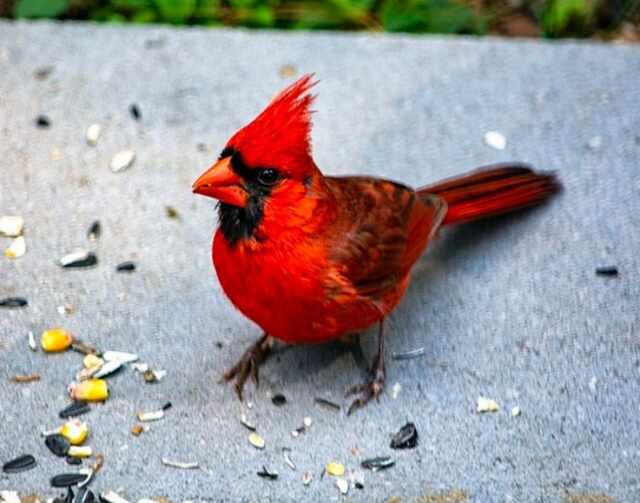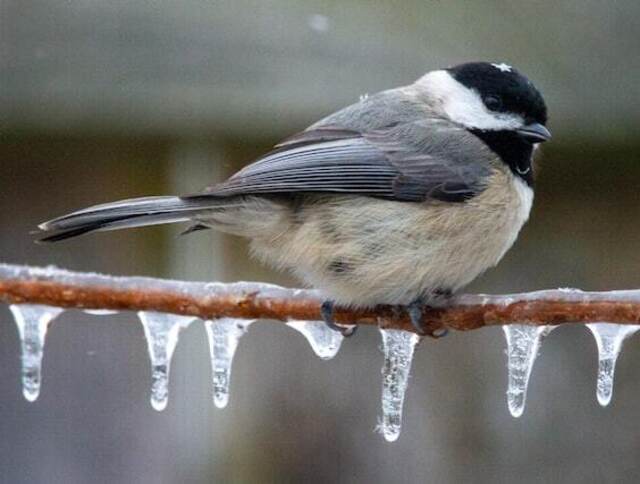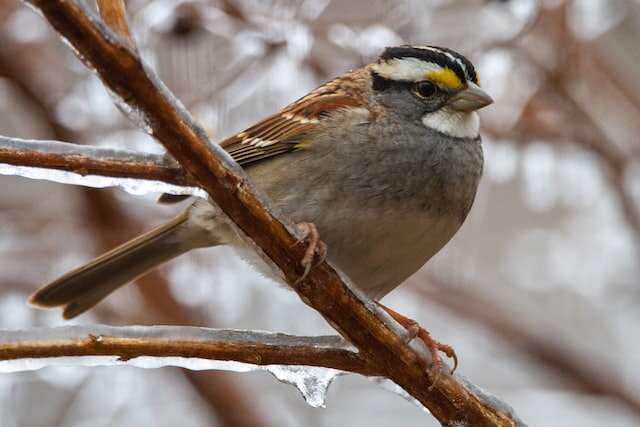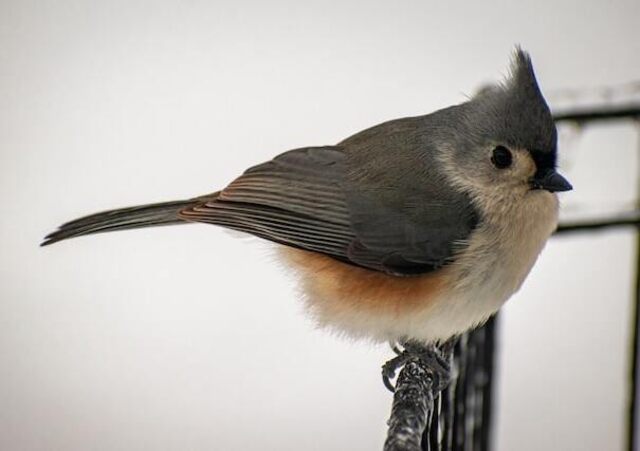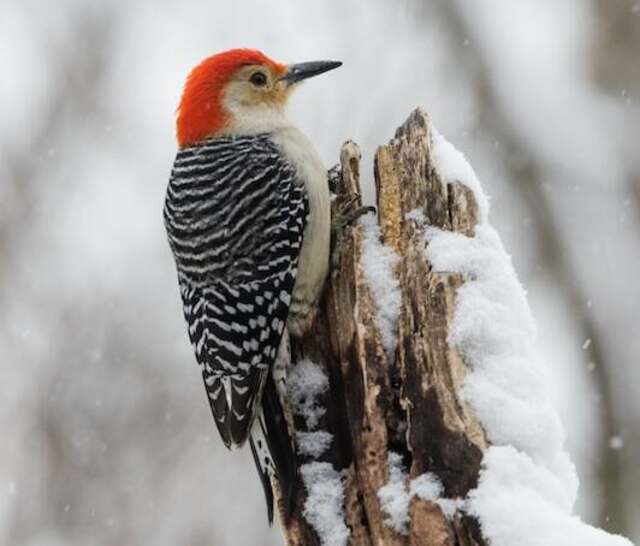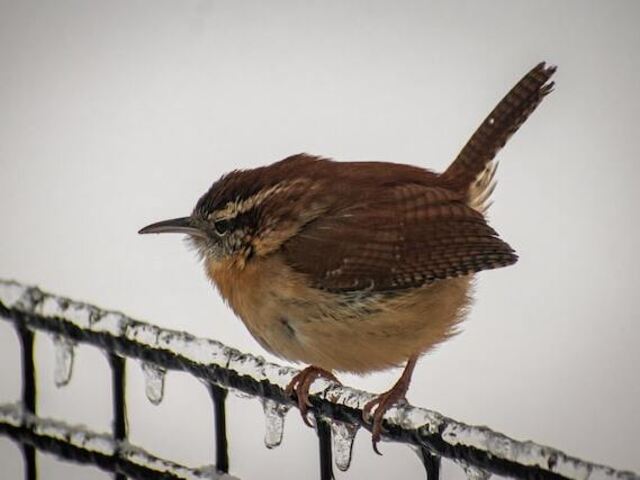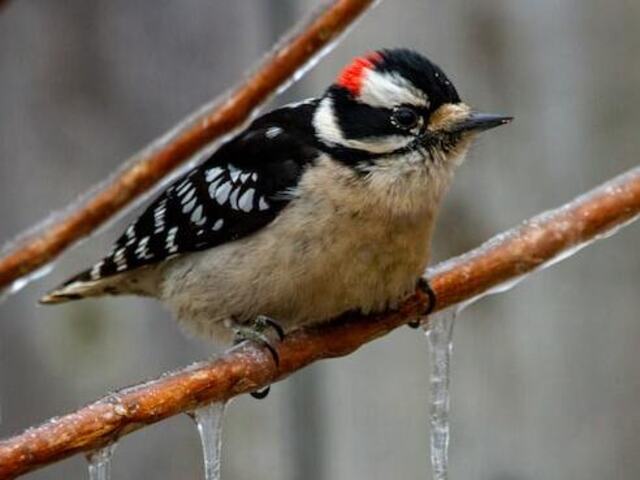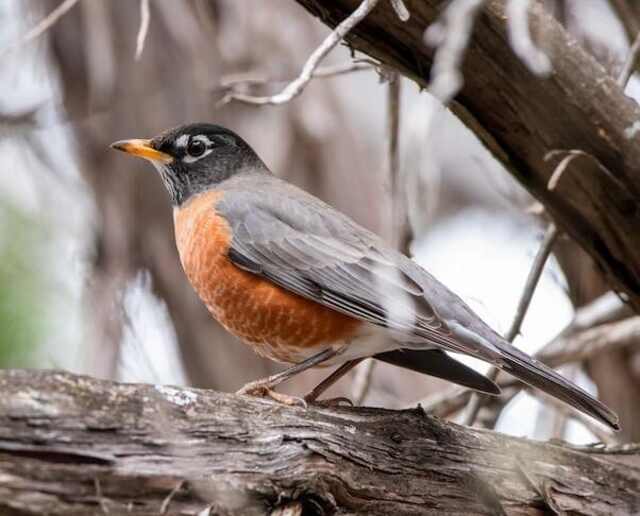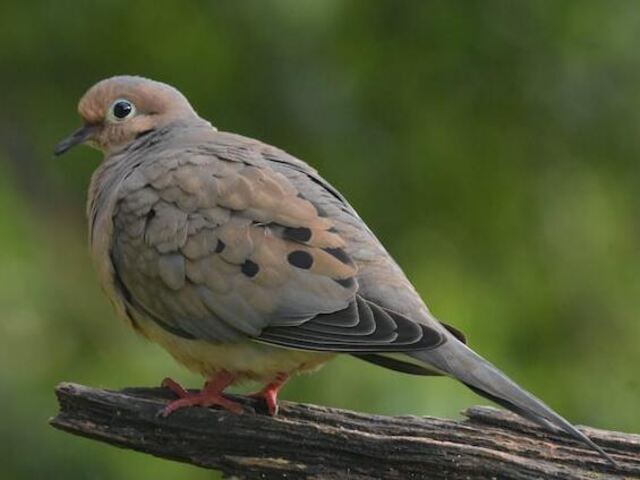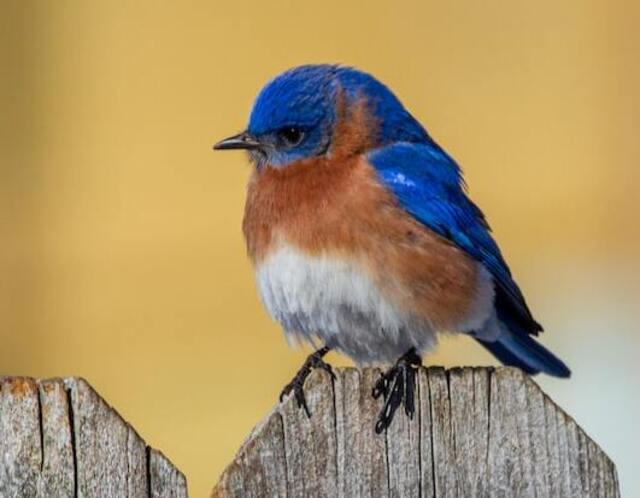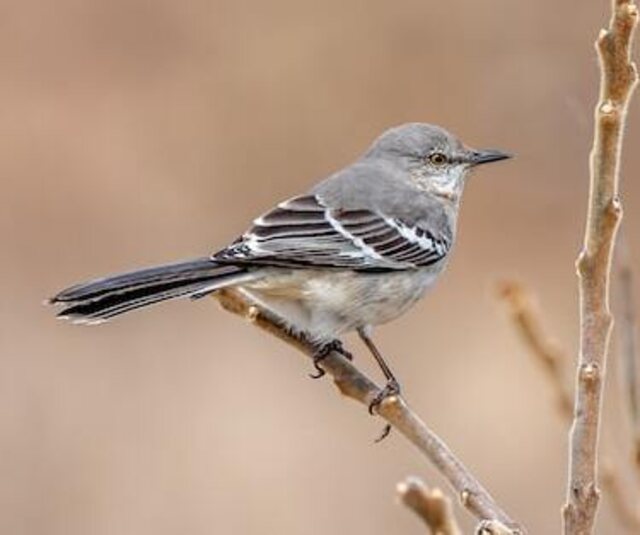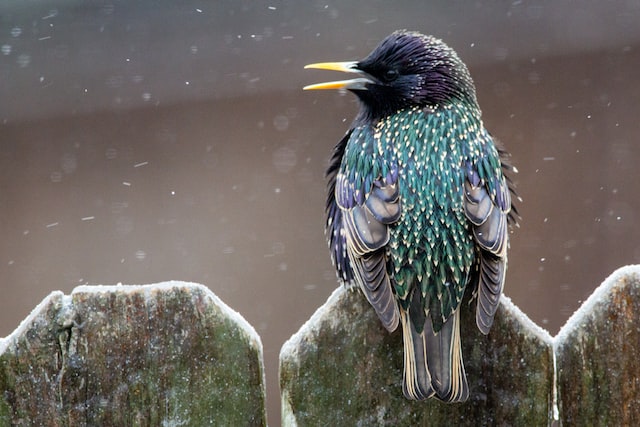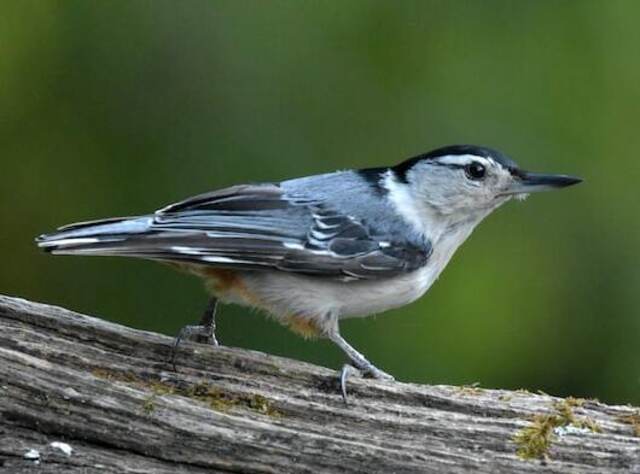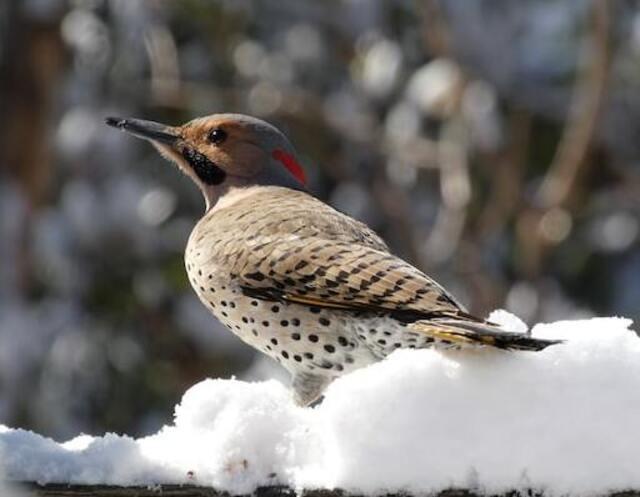Delve into the winter wonderland of Arkansas with our expert guide featuring 20 backyard birds! From the cheerful Northern Cardinal to the agile Carolina Chickadee, Arkansas offers a haven for avian enthusiasts during the colder months.
In this comprehensive guide, we’ll uncover the unique characteristics, habits, and behaviors of these winter visitors, providing valuable insights for birdwatchers and nature lovers alike.
Table of Contents
- 1 Backyard Winter Birds in Arkansas
- 1.1 Northern Cardinal
- 1.2 Carolina Chickadee
- 1.3 Dark-eyed Junco
- 1.4 American Crow
- 1.5 White-throated Sparrow
- 1.6 Blue Jay
- 1.7 Tufted Titmouse
- 1.8 Red-bellied Woodpecker
- 1.9 Carolina Wren
- 1.10 Downy Woodpecker
- 1.11 American Goldfinch
- 1.12 American Robin
- 1.13 Mourning Dove
- 1.14 Eastern Bluebird
- 1.15 Northern Mockingbird
- 1.16 European Starling
- 1.17 White-breasted Nuthatch
- 1.18 Northern Flicker
- 1.19 House Finch
- 1.20 Red-winged Blackbird
- 2 Author
Backyard Winter Birds in Arkansas
Northern Cardinal
- Length: 8.3-9.1 in (21-23 cm)
- Weight: 1.5-1.7 oz. (42-48 g)
- Wingspan: 9.8-12.2 in (25-31 cm)
- Scientific Name: Cardinalis cardinalis
- Frequency of Occurrence: 59.17% (Statistics by: eBird)
- Maps: Range Map – Sightings Map
- Sounds: Calls and Sounds
General Information: The Northern Cardinal is a beautiful bird with its vibrant red feathers, and can be found throughout much of the United States. The range of this species includes Canada, Mexico, and the eastern half of the United States down to northern Florida. They thrive in open woodlands, shrublands and residential areas near sources of water. This species mainly feeds on insects, grains, and fruit.
Cardinals build nests lined with grasses or pine needles high up in trees or shrubs for protection from predators.To attract these birds during winter time, you can provide a variety of food sources like black-oil sunflower seeds, safflower seed, peanuts, suet cakes and chopped fruits.
Offering nesting material such as cotton fibers or strips of bark may also be helpful in attracting Northern Cardinals to your backyard during the cold season.
Read more:
- 10 Best Bird Feeders for Cardinals 2023 (Ultimate Guide!)
- Best Birdhouse for Cardinals 2022 (Tested And Rated)
- Cardinal Bird Facts Every Birdwatcher Should Know!
Carolina Chickadee
- Length: 4.7-6.0″ in (12.0-15.2 cm)
- Weight: 0.3-0.5 oz (9-14 g)
- Wingspan: 6.3-8.3 in (16-21 cm)
- Scientific Name: Poecile carolinensis
- Frequency of Occurrence: 48.34%
- Maps: Range Map – Sightings Map
- Sounds: Calls and Sounds
General Information: The Carolina Chickadee (Poecile carolinensis) is an adorable and common bird found throughout the eastern United States. Its range extends from southeastern Canada to parts of Mexico, and it can be seen in a variety of habitats, from dense forests to suburban backyards.
These birds prefer deciduous trees for nesting, but may also use conifers if given the opportunity. During the summer months, Carolina Chickadees feed mainly on insects like caterpillars, moths, and beetles. In winter, this species prefers more plant-based foods such as seeds and berries.
To attract them to your yard during this time of year, offer up suet cakes or Niger seed feeders filled with black oil sunflower seeds! Carolina Chickadees will often nest in woodpeckers’ holes if they are available but otherwise build their own nests made of mosses and lichens stuffed into cavities in tree trunks or stumps.
Read more: Carolina Chickadees – 9 Best Ways To Attract Them Fast!
Dark-eyed Junco
- Length: 5.5-6.3 in (14-16 cm)
- Weight: 0.6-1.1 oz. (18-30 g)
- Wingspan: 7.1-9.8 in (18-25 cm)
- Scientific Name: Junco hyemalis
- Frequency of Occurrence: 46.92%
- Maps: Range Map – Sightings Map
- Sounds: Calls and Sounds
General Information: The Dark-eyed Junco is a common bird throughout North America, and is especially abundant in Canada and the United States. They inhabit a wide range of habitats from open woodlands, chaparral, grassland, coniferous forests to mountain meadows.
Depending on the region, their diet consists of insects, weed seeds and grains. The female builds a cup-like nest made of twigs and bark in dense shrubs or trees for nesting.
To attract these birds during winter season, you can provide them food such as black oil sunflower seeds mixed with millet or suet cakes that are high-energy foods. You may also put some Niger thistle seed in your feeder to provide them with additional nutrition needed to survive the cold months.
Read more: Fun Facts About Dark-eyed Juncos
American Crow
- Length: 15.8-20.9 in (40-53 cm)
- Weight: 11.2-21.9 oz. (316-620 g)
- Wingspan: 33.5-39.4 in (85-100 cm)
- Scientific Name: Corvus brachyrhynchos
- Frequency of Occurrence: 46.90%
- Maps: Range Map – Sightings Map
- Sounds: Calls and Sounds
General Information: The American Crow is widely distributed in North America and can be found throughout much of the continent. They prefer to inhabit open forests, fields, farmlands, backyards or even wetlands. Their diet mainly consists of seeds, nuts, fruits as well as insects that they often hunt by stalking around looking for food in grassy areas or on the ground.
They are also known to eat human leftovers such as french fries if available! For nesting, they build their nests high up in trees, either close together with other crows or far away from other birds.
To attract these bold birds during winter season, you may plant some shrubs nearby your windows where there is some sunlight, plus you will want to provide birds with an abundant supply of water and keep bird feeders stocked with sunflower seed, peanuts or corn.
Read more: How To Attract Crows To Your Backyard: Expert Tips!
White-throated Sparrow
- Length: 6.3-7.1 in (16-18 cm)
- Weight: 0.8-1.1 oz. (22-32 g)
- Wingspan: 7.9-9.1 in (20-23 cm)
- Scientific Name: Zonotrichia albicollis
- Frequency of Occurrence: 45.92%
- Maps: Range Map – Sightings Map
- Sounds: Calls and Sounds
General Information: The White-throated Sparrow is a beautiful breeding bird commonly found across North America. This little sparrow has a distinctive white throat with accompanying stripes that are black and yellow. Its range extends from central Alaska all the way east to Newfoundland; however, it can be spotted in some areas of Canada year round.
The species primarily lives within coniferous forests but does occasionally appear near edges of open fields or grasslands for seasonal feeding opportunities as well. In spring and summer months these birds feed on insects, spiders, caterpillars, fruits, grains and seeds from weeds among other vegetation.
When nesting season arrives they look for shrubs with dense overhanging foliage which offer seclusion while creating nests out of twigs and grasses lined with feathers.
Blue Jay
- Length: 9.8-11.8 in (25-30 cm)
- Weight: 2.5-3.5 oz. (70-100 g)
- Wingspan: 13.4-16.9 in (34-43 cm)
- Scientific Name: Cyanocitta cristata
- Frequency of Occurrence: 44.79%
- Maps: Range Map – Sightings Map
- Sounds: Calls and Sounds
General Information: The Blue Jay is a striking songbird found throughout the Eastern and Midwestern United States, as well as parts of Canada. These birds are highly adaptable, but generally prefer deciduous or mixed forests for their main habitats.
They are omnivorous, feeding on insects, nuts and seeds as well as fruits like cherries and apples. Blue Jays build open cup nests in trees or shrubs near the trunk.
To attract these beautiful birds to your garden during the winter months, it’s best to provide a variety of food sources such as suet feeders and bird seed mixes with sunflower seeds, peanuts and other items that they particularly enjoy. Additionally, placing nesting boxes around your yard can also encourage them to make their home there!
Read more:
- What Attracts Blue Jays to your Yard?(Expert Tips)
- 15 Best Bird Feeders For Blue Jays (Tried & Tested 2022)
- What Does A Blue Jay Eat? (10 Favorite Foods Revealed!)
Tufted Titmouse
- Length: 5.5-6.3 in (14-16 cm)
- Weight: 0.6-0.9 oz. (18-26 g)
- Wingspan: 7.9-10.2 in (20-26 cm)
- Scientific Name: Baeolophus bicolor
- Frequency of Occurrence: 42.52%
- Maps: Range Map – Sightings Map
- Sounds: Calls and Sounds
General Information: The Tufted Titmouse is a popular backyard bird found in eastern and central parts of the United States. It prefers deciduous forests with mature trees and abundant shrub cover, making it a common sight in hardwood forests and suburban backyards alike.
In terms of diet, these birds feed on a variety of items such as insects, nuts, berries, fruits, and even suet cakes. When nesting season rolls around, the Tufted Titmouse builds cups nests in tree cavities or birdhouses. To attract Tufted Titmice to your yard during winter months, provide them with food sources such as sunflower seeds and suet cakes.
Additionally, keep your bird feeders clean to prevent disease among birds that visit your yard. With some simple steps, you can make your backyard an attractive winter habitat for this beautiful songbird!
Read more: How to Attract Tufted Titmouse to my Yard? (Explained)
Red-bellied Woodpecker
- Length: 9.4 in (24 cm)
- Weight: 2.0-3.2 oz. (56-91 g)
- Wingspan: 13.0-16.5 in (33-42 cm)
- Scientific Name: Melanerpes carolinus
- Frequency of Occurrence: 41.30%
- Maps: Range Map – Sightings Map
- Sounds: Calls and Sounds
General Information: The Red-bellied Woodpecker is a colorful and interesting bird that can be found in southeastern Canada, the eastern United States, and parts of northern Mexico. They prefer habitats such as open woodlands, deciduous forests, and suburban areas but they also like to visit yards with plenty of trees.
Their diet consists mainly of insects, seeds, nuts and fruit. To attract them during the winter, you should supply suet feeders with high-fat foods like peanut butter. They are cavity nesters so providing nest boxes may encourage them to stay around for longer periods of time.
If you’re lucky enough to have a Red-bellied Woodpecker visiting your yard or garden this winter, make sure to take care of it by providing food sources and nest boxes!
Read more: How to Attract Red-bellied Woodpeckers to your Yard?
Carolina Wren
- Length: 4.7-5.5 in (12-14 cm)
- Weight: 0.6-0.8 oz (18-22 g)
- Wingspan: 11.4 in (29 cm)
- Scientific Name: Thryothorus ludovicianus
- Frequency of Occurrence: 38.13%
- Maps: Range Map – Sightings Map
- Sounds: Calls and Sounds
General Information: The Carolina Wren is a small, lively bird that can be found in many parts of North America. These birds have a wide distribution range and can be found from Southern Canada to the Gulf of Mexico. Their main habitats include woodlands, forests, swamps, shrub areas, parks, urban yards and gardens.
Carolina wren’s feed on insects such as grasshoppers, wasps, spiders and caterpillars. They also enjoy berries, chopped fruits and sunflower seeds. During nesting season, they look for places with dense vegetation or tree hollows where they can build their nests.
To attract these birds in winter, you should provide them with a good source of food, such as suet blocks or mealworms that are specifically made for wild birds. You can also put up a bird feeder in your yard and add some water sources like a bird bath or shallow dishes filled with water.
Read more: How to Attract Wrens to your Backyard? (Expert’s Guide!)
Downy Woodpecker
- Length: 5.5-6.7 in (14-17 cm)
- Weight: 0.7-1.0 oz. (21-28 g)
- Wingspan: 9.8-11.8 in (25-30 cm)
- Scientific Name: Picoides pubescens
- Frequency of Occurrence: 35.73%
- Maps: Range Map – Sightings Map
- Sounds: Calls and Sounds
General Information: The Downy Woodpecker is a small but beautiful bird that can be found across North America. It has a wide distribution range, inhabiting forests, woodlands, open areas and residential yards. The primary habitats for the Downy Woodpecker are deciduous or mixed woods with well-developed trees and shrubs in which it feeds on insects, fruits, nuts and seeds.
In the winter months when food is scarce, suet and seed mixtures can be hung from feeding stations to provide this bird with sustenance. As for nesting, the Downy Woodpecker prefers natural cavities in the trunks of dead trees or wooden posts close to meadows and fields; it may also use nest boxes if available.
With its distinctive black-and-white plumage and loud tapping call, it’s easy to identify this species as they flit around our gardens looking for food. To attract them during the winter months, make sure you provide plenty of sources of food such as high energy fat balls or suet cakes so that they can get through cold spells with ease.
Read more: How to Attract Downy Woodpeckers to Your Yard? (Easy!)
American Goldfinch
- Length: 4.3-5.1 in (11-13 cm)
- Weight: 0.4-0.7 oz. (11-20 g)
- Wingspan: 7.5-8.7 in (19-22 cm)
- Scientific Name: Spinus tristis
- Frequency of Occurrence: 32.60%
- Maps: Range Map – Sightings Map
- Sounds: Calls and Sounds
General Information: The American Goldfinch is a delightful small bird that can brighten up any backyard. It has a wide distribution range, being found in the US and parts of Canada, Mexico and Central America. Its main habitats are open woodlands, meadows and suburban gardens.
The Goldfinch feeds mainly on seeds and insects, but also likes nectar from flowers in springtime. They build their nests out of twigs and grasses lined with soft plant material such as feathers or thistle down.
To attract them to your garden in winter you should provide a range of food sources including sunflower hearts, peanuts and Niger seed in feeders or trampled around the ground; providing perches will help them eat more easily too.
Read more: Interesting American Goldfinch Facts You Need to Know!
American Robin
- Length: 7.9-11.0 in (20-28 cm)
- Weight: 2.7-3.0 oz (77-85 g)
- Wingspan: 12.2-15.8 in (31-40 cm)
- Scientific Name: Turdus migratorius
- Frequency of Occurrence: 31.35%
- Maps: Range Map – Sightings Map
- Sounds: Calls and Sounds
General Information: The American Robin is an impressive and beloved backyard bird that has a wide distribution range from southern Alaska to Mexico. They thrive in a variety of habitats, including open woodlands, fields, and gardens. During the winter months, they can be seen foraging for food on lawns and often visiting backyard feeders for suet or other treats.
To attract them to your property during cold temperatures, it’s best to provide a reliable supply of food and water, especially if there are no open water sources nearby. The American Robin builds nests in trees and shrubs, where they lay three to five light blue eggs.
They typically feed on insects such as beetles, caterpillars, grasshoppers, as well as fruits like berries and cherries. With some effort, you can keep these beautiful birds around all year round!
Read more:
- How To Attract Robins To Your Yard – 7 Best Tips!
- 5 Best Bird Feeders For Robins (Tested & Rated For 2022)
Mourning Dove
- Length: 9.1-13.4 in (23-34 cm)
- Weight: 3.4-6.0 oz. (96-170 g)
- Wingspan: 17.7 in (45 cm)
- Scientific Name: Zenaida macroura
- Frequency of Occurrence: 30.31%
- Maps: Range Map – Sightings Map
- Sounds: Calls and Sounds
General Information: Mourning Doves are a common sight across much of North and Central America, with their distribution ranging from Canada to Panama. They inhabit open areas such as grasslands, prairies, pastures, farmlands, fields, golf courses, parks and gardens. In winter, they can be seen in more urban settings such as city parks where they feed on weed seeds, which makes them easy to attract.
Their diet is mainly made up of seed, but they also eat some insects when available. During the nesting season, Mourning Doves make flimsy nests out of twigs located in trees or shrubs near ground level or up to 20 feet off the ground. To attract Mourning
Doves in winter, you should provide good quality seed such as millet or sunflower hearts and grains like cracked corn and wheat in bird feeders or on the ground. You should also offer water for them to bathe in or drink, which will help bring them closer to your yard so that you can watch and enjoy these beautiful birds!
Read more:
- 25 Fun Facts About Mourning Doves (A Complete Guide!)
- Best Bird Feeder For Doves (Reviewed & Tested for 2022)
Eastern Bluebird
- Length: 6.3-8.3 in (16-21 cm)
- Weight: 1.0-1.1 oz. (28-32 g)
- Wingspan: 9.7-12.5″in. (25-32 cm)
- Scientific Name: Sialia sialis
- Frequency of Occurrence: 26.95%
- Maps: Range Map – Sightings Map
- Sounds: Calls and Sounds
General Information: The Eastern Bluebird is a beautiful songbird that can be found across the eastern half of North America. It has a blue head, wings, tail and back with an orange breast. This bird prefers open fields, meadows, orchards, and woodlands near water for its habitat.
They feed on insects such as beetles, caterpillars, grasshoppers and occasionally berries. For nesting, they create cup-shaped nests made out of twigs, grasses and plant fibers in cavities such as tree holes or nest boxes.
To attract these birds to your yard during winter, you should put up feeders with mealworms and keep them full of fresh food all season long. Adding birdhouses to your garden is also a great way to give these birds their ideal living space!
Read more:
- 68 Fun Facts About Eastern Bluebirds (You Didn’t Know!)
- 9 Best Birdhouses for Bluebirds (Top Picks for 2022)
- How to Attract Eastern Bluebirds to your Yard (Explained)
Northern Mockingbird
- Length:8.3-10.2 in (21-26 cm)
- Weight: 1.6-2.0 oz (45-58 g)
- Wingspan: 12.2-13.8 in (31-35 cm)
- Scientific Name: Mimus polyglottos
- Frequency of Occurrence: 25.77%
- Maps: Range Map – Sightings Map
- Sounds: Calls and Sounds
General Information: The Northern Mockingbird is a species of bird that is natively found in the eastern and southwestern regions of the United States, as well as parts of Mexico, Central America and the Caribbean.
They inhabit open areas such as fields, pastures and woodlands where they can find an abundance of food. Their diet consists mainly of insects, fruit, seeds, and berries.
When it comes to nesting, they prefer dense shrubs or thickets, but will also use fence posts and buildings if need be. In order to attract these birds during winter months, you should supply them with suet cakes, peanuts or sunflower seeds.
Read more: How to Attract Mockingbirds to your Yard? (Expert Tips)
European Starling
- Length: 7.9-9.1 in (20-23 cm)
- Weight: 2.1-3.4 oz. (60-96 g)
- Wingspan: 12.2-15.8 in (31-40 cm)
- Scientific Name: Sturnus vulgaris
- Frequency of Occurrence: 22.84%
- Maps: Range Map – Sightings Map
- Sounds: Calls and Sounds
General Information: The European Starling is an incredibly widespread species, with a distribution range that covers most of the United States and Canada. It prefers a variety of habitats, including open fields and pastures, parks, gardens, farmland, woodland edges, and suburban areas. During the winter months, they can even be found in cities.
This hardy bird has an impressive diet; they feed on a variety of insects as well as fruits, nectar, seeds and grain. In order to attract them during the colder months, you should provide plenty of food sources such as black-oil sunflower seeds or suet cakes, which are high in fat content.
Additionally, providing them with nest boxes will create ideal conditions for nesting and roosting during wintertime. With just a few simple steps, you can easily bring these majestic birds into your backyard.
Read more: How To Attract European Starlings To Your Yard Fast?
White-breasted Nuthatch
- Length: 5.1-5.5 in (13-14 cm)
- Weight: 0.6-1.1 oz. (18-30 g)
- Wingspan: 7.9-10.6 in (20-27 cm)
- Scientific Name: Sitta carolinensis
- Frequency of Occurrence: 22.83%
- Maps: Range Map – Sightings Map
- Sounds: Calls and Sounds
General Information: The White-breasted Nuthatch is a small bird that can be seen in many parts of North America. The species has an expansive range that stretches from Alaska to Mexico, and eastwards all the way to the Atlantic coast. They are usually found in woodlands, especially deciduous forests, but they can also be spotted in other habitats including coniferous forests, parks and gardens.
These birds mostly eat insects and spiders, but they will also take advantage of extra food sources such as suet feeders and peanuts during winter. White-breasted Nuthatches nest in tree cavities or nest boxes if suitable sites are available.
To attract these birds to your backyard during winter, you could provide them with sunflower seeds, cracked corn and suet blended with peanuts – all of which they find irresistible!
Read more: How to Attract Nuthatches to your Backyard? Expert Tips!
Northern Flicker
- Length: 11.0-12.2 in (28-31 cm)
- Weight: 3.9-5.6 oz (110-160 g)
- Wingspan: 16.5-20.1 in (42-51 cm)
- Scientific Name: Colaptes auratus
- Frequency of Occurrence: 22.74%
- Maps: Range Map – Sightings Map
- Sounds: Calls and Sounds
General Information: The Northern Flicker is a member of the woodpecker family and can be found across North America. It has a large range, stretching from Canada to Central America. Its main habitats are open woods and parks with trees that offer plenty of insects for its diet.
The Northern Flicker will also frequent clearings in forests and fields, as well as urban areas. The foods these birds prefer include insects such as beetles, ants, wasps, caterpillars and grasshoppers; they also feed on fruits, nuts, seeds and berries. For nesting purposes, the Northern Flicker prefers natural cavities in trees but may also nest in wooden boxes or houses provided by humans.
During winter months, when food sources become scarce due to cold temperatures, you can attract this bird to your backyard by offering suet or other high-fat treats like peanut butter mixed with oats or cornmeal.
Read more: How to Attract Northern Flickers to your Backyard? (Easy)
House Finch
- Length: 5.1-5.5 in (13-14 cm)
- Weight: 0.6-0.9 oz. (16-27 g)
- Wingspan: 7.9-9.8 in (20-25 cm)
- Scientific Name: Haemorhous mexicanus
- Frequency of Occurrence: 21.81%
- Maps: Range Map – Sightings Map
- Sounds: Calls and Sounds
General Information: The House Finch is one of the most common songbirds in North America, and its range extends from southern Canada right down to Mexico. They typically inhabit open woodlands, suburban areas, farmland, and gardens.
Their diet includes seeds, fruits, grains, and insects. Nests are usually built in sheltered places such as tree cavities or among thick foliage.
To attract them during the winter months, you can provide bird feeders with a variety of seeds and suet blocks. Additionally, providing nest boxes for them to safely roost in can also help bring these beautiful birds around.
Read more:
- How to Attract House Finch to your Yard? (Easy & Fast)
- 9 Best Birdhouse for Finches? (Rated & Tested for 2022)
Red-winged Blackbird
- Length:6.7-9.1 in (17-23 cm)
- Weight: 1.1-2.7 oz (32-77 g)
- Wingspan: 12.2-15.8 in (31-40 cm)
- Scientific Name: Agelaius phoeniceus
- Frequency of Occurrence: 17.12%
- Maps: Range Map – Sightings Map
- Sounds: Calls and Sounds
General Information: The Red-winged Blackbird is one of the most widespread birds in North America. It has a large distribution range that stretches from Alaska to Mexico, and all the way east to the Atlantic Coast. This bird can be found in wetlands, grasslands, and agricultural lands with moist habitats near water sources.
They are mainly insectivores, but also feed on fruits and grains. During nesting season Red-winged blackbirds build cup-shaped nests made from plant material and are usually placed close to or within shrubs or trees around bodies of water.
To attract these birds in winter, you should provide them with food sources such as sunflower seeds and suet cakes, as well as plenty of fresh drinking water. Bird baths are also great for attracting these beautiful birds, so make sure to keep your baths clean!
Related Posts:


